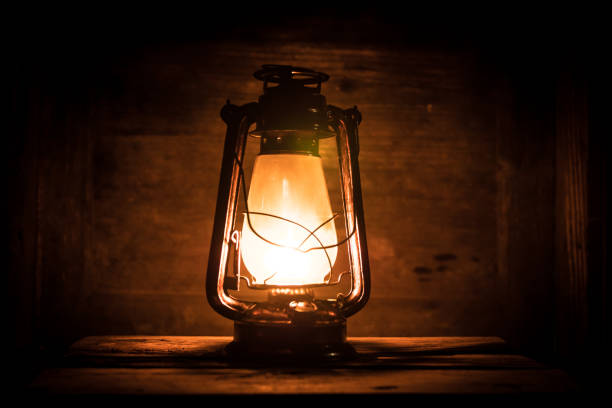- Despite its limitations—the smoke, the heat, and the danger of tipping over—the kerosene lamp served us well. It taught us to make do with what we had. It gave us light when darkness threatened to stop us from reading, cooking, or simply being together.
The kerosene lamp, smoky and warm, was our nightly companion lighting up study tables, supper times, and childhood memories before electricity came.
I remember every evening, just before dusk, my mother would send me to the nearby kiosk or shop to buy paraffin. The request was usually the same: “Enda ununue mafuta ya taa.”
A small bottle sometimes an old juice container would be clutched tightly in my hand as I made my way to the local shop. I’d hand it over to the shopkeeper and return home with just enough paraffin to keep our little kerosene lamp glowing through the night.
Once home, the lamp would go through a ritual of preparation. The first step was cleaning the glass chimney.
After a few nights of burning, soot would collect on the inside, dimming the brightness. We would wash the glass carefully with soapy water, sometimes even with ashes when soap was not available, then dry and polish it with an old rag until it gleamed.
Read More
The cleaner the glass, the brighter the light it gave—a fact we knew too well, especially when exam season approached.
The wick was another critical component. Made of thick cotton, it sat half-immersed in the paraffin, soaking up the fuel to keep the flame alive. But wicks had a strange way of disappearing over time.
They would burn down slowly, and you'd have to constantly adjust them with a small knob or even push them up manually using a stick or wire when the knob broke—which it often did. Finding a new wick wasn’t always easy, so we stretched what we had as far as we could.
With the lamp glowing on the table, we’d huddle around it to study, eat, or listen to stories. The lamp threw warm light over our books, and though it sometimes flickered with the wind or gave off a smell of burning paraffin, it was our companion through many long nights. The dim corners of the room, the smell of paraffin, and the soft crackle of the flame are etched into our memories.
The lamp always had its special place. On most nights, it was placed right in the middle of the wooden table where we studied, far from curtains or paper to avoid accidents. Sometimes, it would be hung on a nail hammered into the wall, high enough to light the whole room but low enough for its glow to reach our books.
After we finished studying, my mother never left it there. She would always come for it and carry it to her room or put it out completely. “Mtatafuta mafuta tena?” she would ask with a smile—half warning, half care—making sure we didn’t sneak it back on and waste precious paraffin.
Despite its limitations—the smoke, the heat, and the danger of tipping over—the kerosene lamp served us well. It taught us to make do with what we had. It gave us light when darkness threatened to stop us from reading, cooking, or simply being together.








